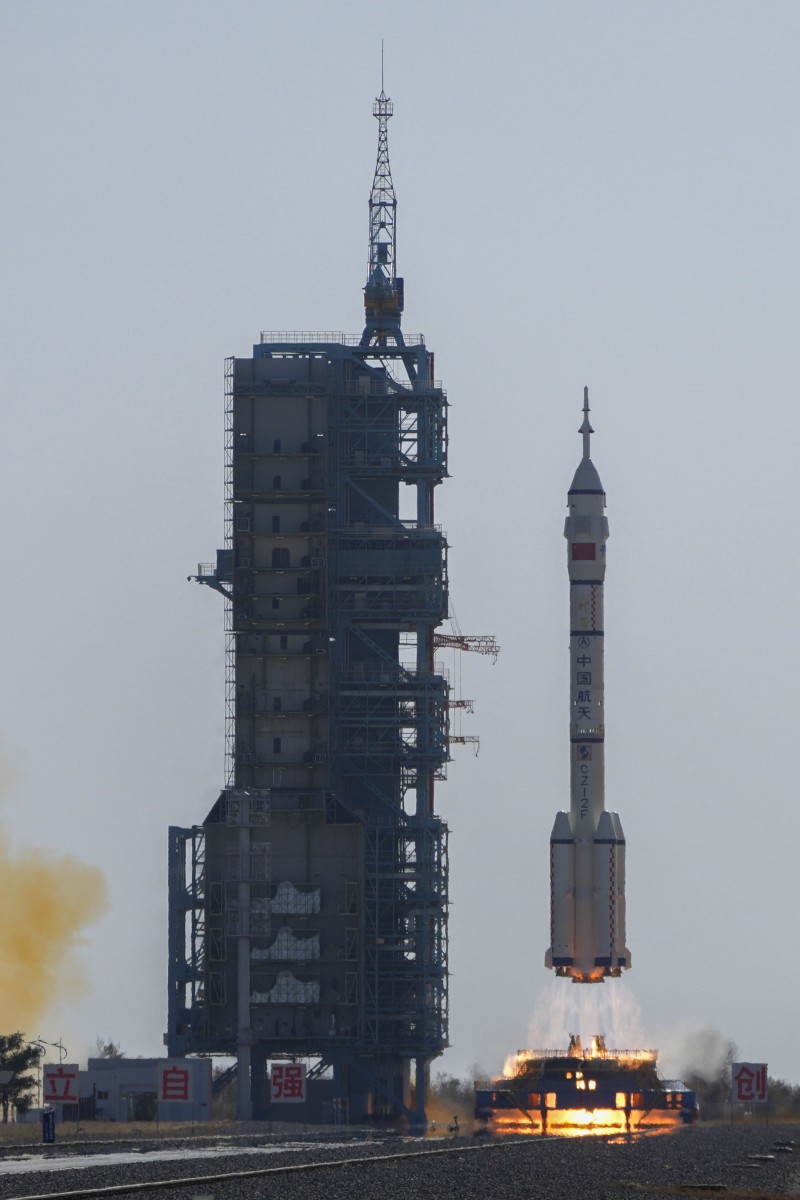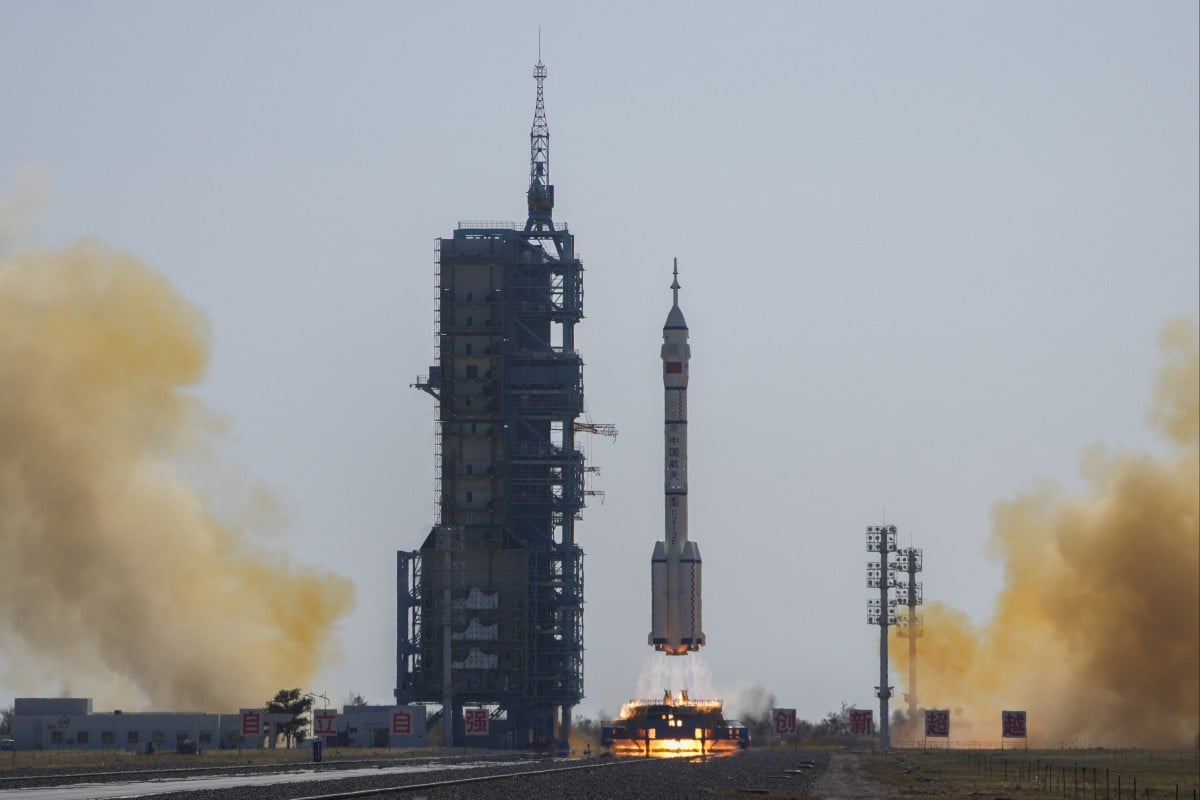
- Crew, with an average age of 38, will spend six months in space conducting experiments in space medicine, biotechnology, ecology, fluid physics and materials science
- Tiangong is China’s new permanent space station and has been in full operation since December 2022
 A Long March-2F rocket carrying the youngest-ever crew of Chinese astronauts lifted off in Jiuquan Satellite Launch Centre in northwest China. Photo: AP
A Long March-2F rocket carrying the youngest-ever crew of Chinese astronauts lifted off in Jiuquan Satellite Launch Centre in northwest China. Photo: APThe youngest-ever crew of Chinese astronauts landed in China’s space station last month. Their average age is 38. This is paving the way for a new generation of astronauts to advance the country’s space ambitions in the future.
The spacecraft Shenzhou-17, or “Divine Vessel”, and its three passengers lifted off atop a Long March-2F rocket from the Jiuquan Satellite Launch Centre in northwest China.
Leading the six-month mission was former air force pilot Tang Hongbo, 48, who was on the first crewed mission to the Tiangong space station in 2021.
From dark matter to black holes, explore the mysterious dark sides of the Milky Way galaxy
His return to Tiangong – meaning “Celestial Palace” in Chinese – also set a record for the shortest interval between two space flight missions by Chinese astronauts. Tang’s short interval between missions suggests a faster rotation of astronauts in the coming years.
Tang said he “dreamed about going back to space” over the past two years, adding that the space station had become home.
Tiangong is China’s new permanent space station and has been in full operation since December 2022 (see graphic below).
The Shenzhou-17 crew will continue the work of the previous crew, which conducted 70 experiments in space medicine, biotechnology, ecology, fluid physics, materials science, among others. Station maintenance is also a priority.
“As a commander, I can feel that there is a huge responsibility on my shoulders,” Tang said.
Tang, from China’s second batch of astronauts in 2010, had to wait more than a decade before he was picked for his inaugural space flight in 2021.
Life on Mars? Nasa rover reveals new evidence of organic molecules on the red planet
By contrast, his fellow Shenzhou-17 crew members Tang Shengjie, 33, and Jiang Xinlin, 35, both travelling to space for the first time, joined China’s third batch of astronauts in September 2020.
The selection process for the fourth batch of astronauts has already begun, seeking candidates with doctoral degrees in disciplines such as biology, physics and astronomy. It is also opening the process to applicants from Hong Kong and Macau for the first time.
The first and second batches of astronauts were all former air force pilots, like Tang, who joined the People’s Liberation Army in 1995.
Reuters and staff writers